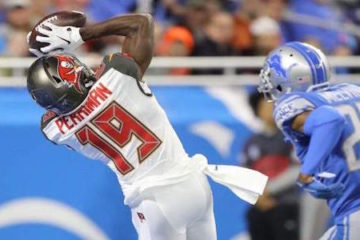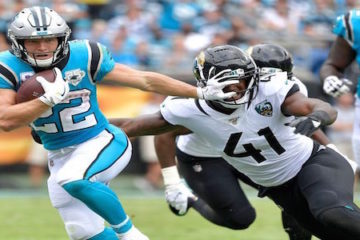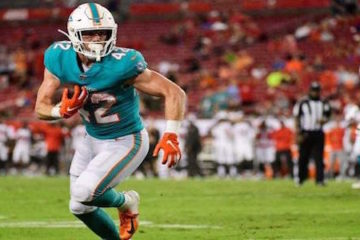2012 Fantasy Baseball Arizona Diamondbacks Starting Rotation Preview
Arizona made one of the more interesting moves this offseason when they dealt top prospect Jarrod Parker to Oakland for
Trevor Cahill. Along with Ian Kennedy and Dan Hudson, Cahill will be a part of an exciting young trio of starters that I think gives Arizona the best chance to win the NL West.But from a fantasy perspective, I’m leery of all three.
Kennedy’s sub-3.00 ERA (2.88) put him in a group with just 15 other players who were able to get under that arbitrary 3.00 mark. He also won 21 games, struck out over eight batters per nine innings, and had a strikeout-to-walk ratio over 3.50. That’s just an insane season, and ESPN’s player rater said Kennedy was the 7th best starter in 2011.
Coming off that kind of season, Kennedy is sure to be drafted fairly high. It’s hard to say what the market will be for him exactly without the help of average draft position from mock drafts, but if I had to guess, I imagine he’ll be around the 15th pitcher taken and no lower than the 20th pitcher taken. Based on his roto numbers from last year you’d think that was appropriate if not a bit of a steal, but when you look at the other numbers, you see that Kennedy shouldn’t be drafted as a top 20 starter.
First of all, the best ERA predictors (xFIP and SIERA) say Kennedy’s ERA should have been at least half a run higher last year (around 3.50). A lot of the gap between his ERA and xFIP/SIERA is a result of his luck on balls in play (.270 BABIP) and his luck stranding runners (79.2% LOB%). To be fair, both of those numbers were aided by a defense that ranked tenth in defensive efficiency last year. However, those numbers were far enough from the mean (especially the LOB%) that some regression should be expected despite the fact that Arizona will field basically the same defense.
Because Kennedy is such a young pitcher, it’s absolutely possible that he continues to improve and that his advanced skills could mitigate some of the regression. His strikeout, walk, and groundball rates all improved last year. If that trend continues, the regression won’t hit as hard. However, with some level of regression highly likely and the near certainty fact that Kennedy won’t win 21 games again, I’ll probably pass on Kennedy unless he slips outside the top 20 pitchers to about the 9th round.
Hudson is a bit of a different case. His ERA was lower than his xFIP and SIERA, but the difference wasn’t substantial, and he was fairly luck neutral in the BABIP and LOB% categories. Essentially, Hudson pitched in 2011 much like he did in his 100 innings with Arizona in 2010 with the main difference being his incredible luck in 2010 that carried him to a 2.45 ERA and 1.00 WHIP.
The thing that concerns me about Hudson is that he seems to have traded some power for some control in 2011. His K/9 dropped a full point, but his walk rate also fell from 2.55 to 2.03. I’m sure his manager and pitching coach love this improved control, but as a fantasy owner, I want the K’s. The key to Hudson’s value this season will be his ability to regain some of the ability to miss bats that he exhibited in the minors and during his first stretch in the majors.
Hudson is likely to be drafted in an appropriate spot, and he should be a solid pick as a 3rd or 4th starter because there’s some upside and not a ton of downside.
Finally, we turn to Cahill. Your initial reaction might be to think that the move from the Oakland Coliseum to Chase Field would be a downgrade for Cahill. While the expansive foul territory in Oakland will be missed, Chase Field is deeper than the Coliseum in almost every part of the park.
And the move will be good for him in other respects. First of all, Cahill is a heavy groundball pitcher. His groundball rate was 56% the last two seasons, and Arizona’s top ten defense should really help him turn more of those balls into outs. Second, Arizona also has an offense that is significantly better than the poo-poo platter Oakland sent to the plate last year. He should see a few more wins as a result.
The move could also have a positive impact on his strikeout rate. I’ve written before that facing pitchers could lead to an increase of about 15-20 strikeouts for a high strikeout pitcher. Cahill is not a high strikeout pitcher as his best K/9 was his 6.37 mark last year. However, Cahill struck out almost ten batters per nine innings in the minors. Moreover, his K/9 has gone from 4.53 to 5.40 to 6.37 in the majors. If his progression in that department continues and he gets 5-10 extra K’s thanks to the NL, then Cahill could potentially hit 7.50 K/9.
Cahill didn’t have the best control in the minors and regressed in that department last year (2.88 to 3.55). So he may be a WHIP killer. But the 4.16 ERA and 1.43 WHIP from last year may scare a lot of people off meaning Cahill could potentially be a nice bargain. Personally, I think some of the upside will be realized but not all of it. There’s a moderate bargain to be had.
I should probably warn you mixed-leaguers off
Josh Collmenter before I wrap this up. Don’t be fooled by his 3.38 ERA and 1.07 WHIP from last year. His xFIP was 4.14, he was lucky on balls in play (.255 BABIP), and his K/9 was below 6.00. He’s still young and did post good numbers in the minors, so he’s a definite NL-only option and by no means certain not to ever be relevant again in mixed leagues. But he’s not right now.Oh, and
Joe Saunders sucks.Written by Brett Talley exclusively for thefantasyfix.com. Brett is a law student in Dallas who is glad to be back, baby! You can tell him you wish he would go away again and/or ask him for fantasy advice on Twitter @therealTAL.
(September 3, 2011 – Photo by Ezra Shaw/Getty Images North America)






